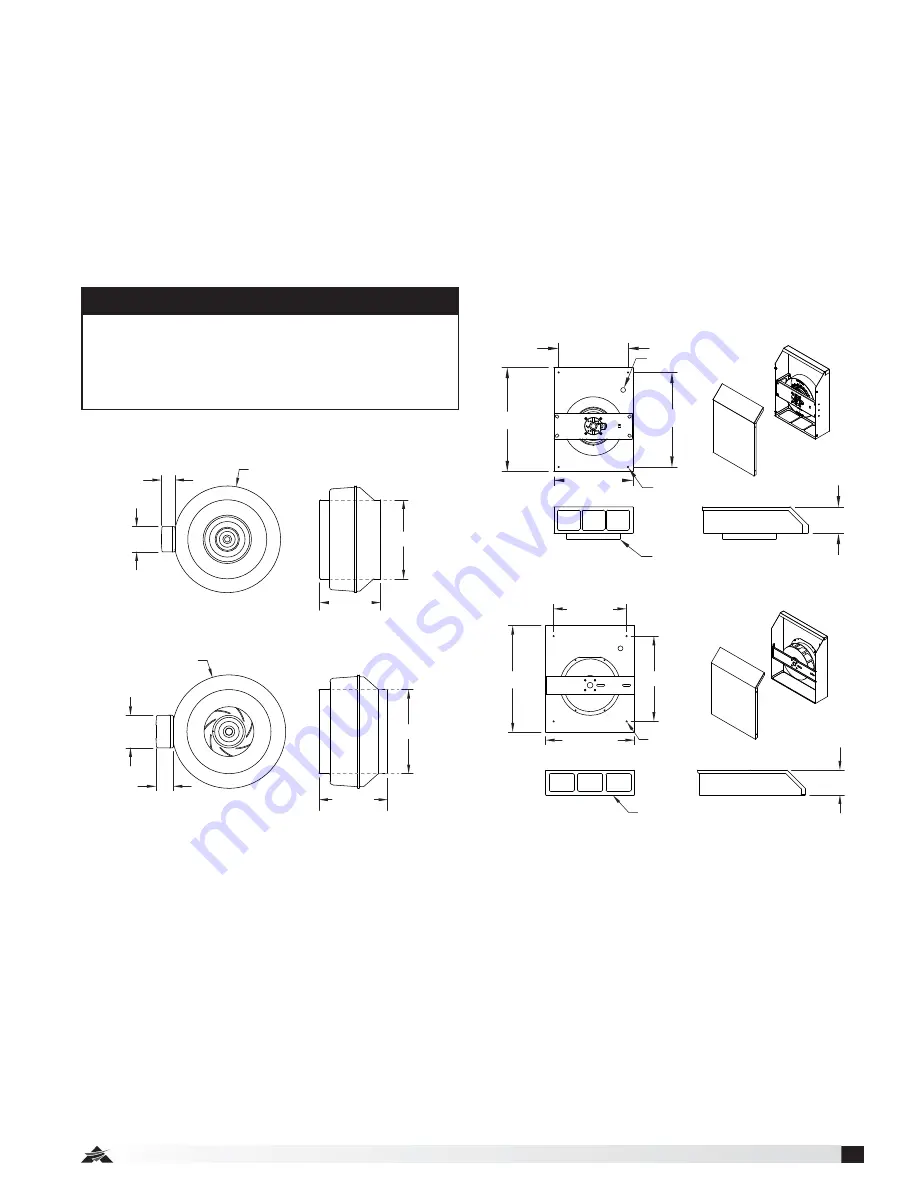
9
Fire Ready Hood
CAUTION
Use sheet metal screws to secure ductwork to inlet
and outlet. It is critical that the screw penetrate the
metal of the flange, but not so far as to bind the
impeller. It may be necessary to angle screws away
from impeller.
Installing Fan (if applicable)
Inline
Install fan vertically in ductwork running between the
unit and roof cap.
For best results, use as few elbows or transitions as
possible. If necessary, long radius elbows or bends are
recommended.
To attach ductwork, use duct tape at inlet and outlet to
assure a good seal. If using fan clamps, attach clamps
and insert screws through clamp into inlet and outlet
flanges.
Wall Mounted Fan
Fasten the fan box to an external wall via the four
0.27-inch mounting holes.
Run electrical through the 0.81-inch hole towards the
top right corner of the box.
Attach ductwork using duct sealant, caulk, or tape
to all seams to prevent air leakage and maximize air
performance.
For best results use as few elbows or transitions as
possible. If necessary, long radius elbows or bends are
recommended.
8.25 in.
10.00 in.
3.75 in.
2.00 in.
Ø13.375 in.
Inline Exhaust Fan - Non-NFPA
Inline Exhaust Fan - NFPA
11.875 in.
10.50 in.
3.75 in.
2.4375 in.
Ø16.00 in.
17.50 in.
12.00 in.
14.00 in.
14.625 in.
4.0625 in.
Ø0.27 in. (4X)
MOUNTING HOLES
Ø8 IN. VENT DUCT CONNECTION
Wall Fan - Non-NFPA
Wall Fan - NFPA
17.8125 in.
11.625 in.
15.875 in.
4.625 in.
Ø0.81 in.
13.375 in.
Ø0.27 in. (4X)
MOUNTING HOLES
Ø8 IN. VENT DUCT CONNECTION










































